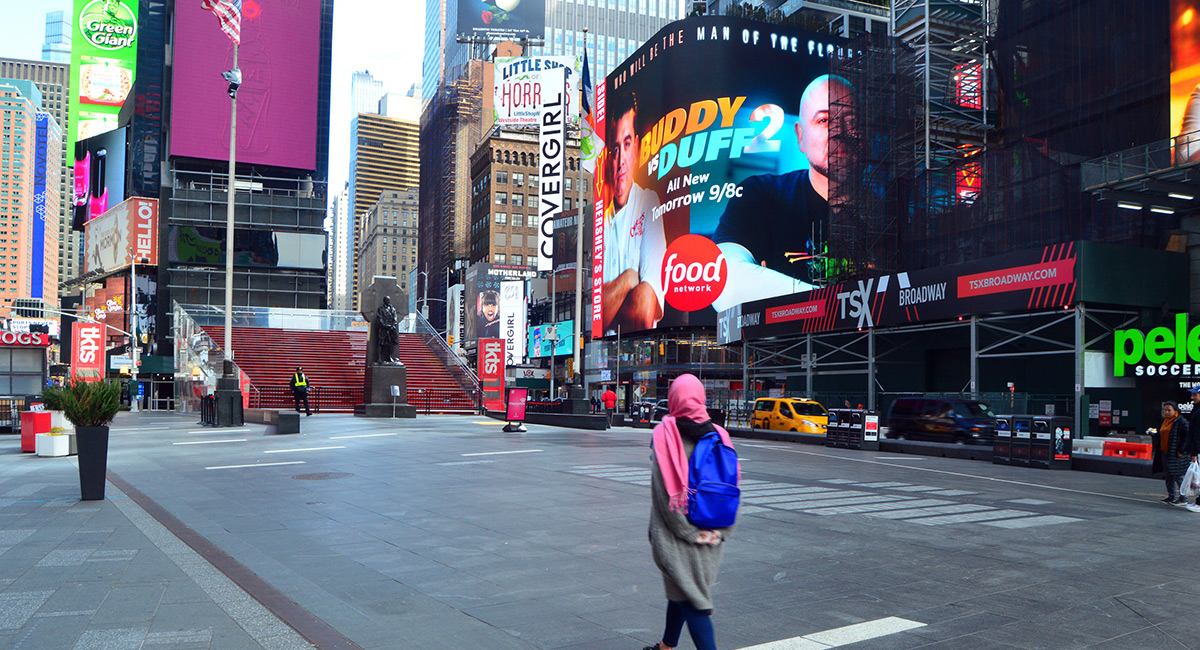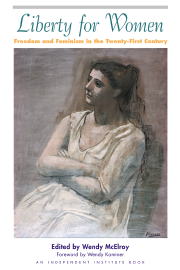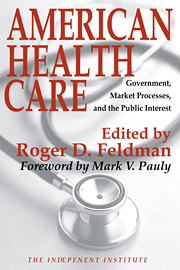The coronavirus crisis raises two urgent questions for the United States: First, what are the likely number of deaths from the coronavirus in either the absence or presence of a determined program of social intervention? Second, what is the set of tools, both coercive and noncoercive, that should be used to implement the most effective interventions in light of the limited resources that are available? Both questions give rise to multiple, often clashing considerations, and they require urgent answers given the rising anxiety about the disease. As of March 30, a total over 143,000 cases have been confirmed in the United States, with just over 2,500 deaths, many of which are concentrated in the New York metropolitan area.
It is critical to take a step back from the immediate crisis in order to articulate a few fundamental propositions that should help place this problem in context.
The first proposition is that there are no acceptable market solutions on how best to allocate scarce social resources for dealing with the coronavirus crises. Markets use wealth as a medium of exchange, and do nothing directly to satisfy the subjective preferences, or individual utilities, of market players. In ordinary times, the correlation between utility and wealth is generally strong enough that it becomes unwise to allocate resources on the basis of utility without reference to wealth. A set of charitable institutions grew up alongside markets to provide assistance to those individuals who had evidently high utility but no wealth to satisfy them. The family is one such institution, but, where it breaks down, private orphanages, hospitals, and countless other charitable institutions grow up to fill that void along with some government programs.
Second, in ordinary times, these essential nonmarket institutions can operate effectively at a reasonable cost that does not threaten the operation of standard exchange mechanisms for ordinary goods and services that do trade in wealth, as measured in dollars or dollar equivalents. But in times of extreme stress, the constraints of scarcity not only remain, but also tighten. Hence, nonmarket institutions are developed to minimize the blow. Triage in wartime is not a market solution in which people bid for medical care in medical wards. Instead, when resources are stretched beyond the breaking point, physicians make life-or-death decisions by dividing individuals into three groups. Those who will get better on their own; those who will die anyway; and those who can pull through with care. The resources are devoted to the middle category. The resources in question seem to be sufficient to avoid that dreaded process in most settings but there are already reports that the practice is going on in the hardest hit locations. If the number of cases gets as large as the more pessimistic accounts suggest, some form of triage will become necessary. Even though the system is far from perfect, no one has been able to devise a better one.
So in approaching the two questions I posed earlier, the issue is not whether there should be a government response, but how it should best take place. As I shall explain later, common estimates of the utility of any individual life are far in excess of the material wealth that society has to deal with them. The problem is especially acute because this not a question of offering relatively inexpensive assistance to a select few. It is trying to figure out how to take those same limited resources to address a situation in which no one is exempt from the virus, and no cheap fixes are available.
In this world, I think that we are flirting with a social meltdown. The best way to minimize that problem is to rely more heavily on private responses to the difficulty and to be relatively cautious in applying broad coercive measures that will shut down the productive institutions of society by government fiat. The Hayekian insight about how decentralized institutions have a comparative advantage in dealing with complex issues should not be forgotten, even in a legal system that has long recognized the legitimate interests of the state police power to deal with health and safety issues.
As far as the severity of the crisis goes, Neil Ferguson, the United Kingdom’s foremost epidemiologist, stated last week to a Select Committee of Parliament that he was “reasonably confident” that the health service would be able to handle the peak of the epidemic, which is predicted to occur in two to three weeks. He concluded, therefore, that UK deaths would be unlikely to exceed 20,000 and could be significantly lower.
Yet almost immediately thereafter he tweeted that he had not backed down at all from his earlier dire predictions, and that indeed, he thought the transmissibility of the virus had, if anything, slightly increased, so that his initial estimate of 500,000 British deaths held for a do-nothing strategy. The actual number of deaths is 1,228. As of this writing, he has not explained what mix of various coercive and voluntary steps were needed to achieve the desired containment. Indeed, the Wall Street Journal, in an editorial attacking “Worst-Case Coronavirus Science,” defended Ferguson for his candid recognition that the crisis was not as acute as the pessimists had feared.
At the same time, Dr. Anthony Fauci and his colleagues in the New England Journal of Medicine wrote on March 26 that the COVID-19 fatality “may be considerably less than 1%” such that “Covid-19 may ultimately be more akin to those of a severe seasonal influenza (which has a case fatality rate of approximately 0.1%) or a pandemic influenza (similar to those in 1957 and 1968) rather than a disease similar to SARS or MERS, which have had case fatality rates of 9 to 10% and 36%, respectively.” Similarly, a thoughtful explication in the Spectator USA by Dr. John Lee, a British pathologist, argued that some of the dire predictions may be going too far.
More recently, Fauci sounded more alarmist when he predicted that the virus could sicken millions and result at between 100,000 and 200,000 deaths, even as he dismissed the worst-case scenarios of over a million deaths in the United States as “very, very unlikely.”
The question then is what should be done, given uncertain information. Here, there are two general approaches. One thinks the doomsday hypothesis is still valid, meaning that one million Americans, if not more, could die out of a population of about 331 million. There is also a second approach, with which I identify, that sees this problem as being akin to previous episodes of the flu, and is consistent with the lower end of the Fauci estimates. As a rough benchmark for this view, the deadliest flu season in recent years was 2017-2018, with an estimated 80,000 fatalities, which is higher than the levels reached with the 2009 H1N1 pandemic. According to the CDC, around 12,500 people died from H1N1 (range: 8,868-18,306).
But for the moment, let’s assume the pessimists are right and, God forbid, one million people may die. What then, are the social gains from potential interventions?
It is here that the difference between wealth and utility cuts. The customary starting point for this analysis is the apparently bedrock assumption, shared by many economists, that the estimated value of a statistical life (VSL), is about $10 million. The EPA arrives at this result by first asking individuals how much money they would demand to face a 1 out of 10,000 risk of death. On average, people say $1,000, which yields the $10 million figure for the value of an entire life ($1,000 times 10,000 equals ten million).
But does that extrapolation hold? The standard EPA question is asked in the abstract, in a world in which there are no binding financial constraints, and no sense of alternative resource use. People can always demand a sum of money to face some risk, which is categorically distinct from asking the same individual to pay a sum of money to avert stated risk. In any event, taken over the current U.S. population of about 330 million, the EPA’s figure yields a total of about $3,300 trillion in human capital. According to the EPA’s valuation, then, any intervention that costs up to $3,300 trillion in resources could be worth it. Massive interventions, such as quarantining the tri-state area, would be justified under this analysis, so long as money and wealth are no object.
But they are. The actual total household wealth in the United States is about $100 trillion, which works out to about $300,000 per person—about 3 percent of the $10 million VSL. In other words, there is a huge gap between the EPA’s subjective valuation of need and the material and human resources that are available to meet them. Bidding systems work horribly under these circumstances because they exclude from the social calculus all individuals with little or no wealth under a market system that ignores utility. So those resources are unequal to meet the challenges.
Fortunately, they are supplemented by self-help measures that do not put a charge on material resources to nearly the same extent, and it is those activities that in my view promise the best avenue for hope relative to collective actions that are far more costly, which are not explicitly broken out in the common estimates. Those self-help measures include self-quarantine, good diet, and exercise—and these will be taken in perceived relationship to the size of the risk, as measured by age, health, and background circumstances.
The dispute begins when coercive measures are imposed, for it is quite clear that there are not enough resources to meet the EPA’s VSL. Thus, one common measure of health is the QALY, or quality-adjusted-life-year, which is used in order to make interpersonal comparisons of benefits in a setting in which it is impossible to use market mechanisms to establish an exchange value. The more quality years, the higher the return from treatment. One suggestion of many is that we should reduce the value of a life saved roughly in half, in part because “moderate social distancing” could lead to trillions of dollars saved in VSL. For these purposes, I will set that VSL figure at $5 trillion, even though there are higher estimates.
That 50 percent reduction is insufficient to close the gap between utility and wealth. Part of the problem lies in the variation in the VSL across individuals. QALYs are perhaps two-orders of magnitude lower for older people with less than one expected painful year to live than for younger people looking forward to 50 or more years of good health. To see the impact, we should modify the EPA’s general question to make some guess as to an individual’s willingness to pay for particular precautions such as intensive medical care toward the end of life. It is clear that the standard VSL is too high to set the correct level of care. The actual numbers, given the resource constraints, require some triage, and in turn should reduce the amounts of material resources to invest in interventions.
Elderly Americans, moreover, play a key role in the analysis because CDC data suggests that people over 65 account for over 75 percent of the total deaths suffered. So, for these 750,000 potential victims, the correct social investment of hard resources has to be in the billions, not the trillions. For the younger group, the value of a statistical life is still higher, but for most, the risk of death is far lower, so again the commitment of resources should be more limited. Spending a trillion dollars to contain the disease seems far too high, even in the effort to save one million imperiled lives, for that decision would drain away one percent of the $100 trillion in capital to save at best 0.3 percent of the population from this one peril, without attending to their other basic needs.
Massive interventions will of course reduce resources available for other activities. The losses borne in the economic realm could mean additional deaths will be suffered by the 330 million people who have survived the pandemic. Now postulate that, say, only 0.1 percent of this far larger group will die, not because they stay at home, but because of the general loss of resources attributable to the coercive measures aimed at containing the pandemic. I recognize, of course that this 0.1 percent figure could be higher or lower. But the upshot is the loss of some large number of lives until the coronavirus runs its course—on my assumptions, 330,000 lives. If these lives are worth about $5 million per statistical life, that means about $1.65 trillion in losses.
The far larger base coupled with the modified EPA estimate partially offsets a higher incurred rate of death due to the virus. Yet the standard models do not treat these offsets as relevant to the overall situation, and hence make no adjustments for them. Cutting back on the coercive parts of these programs should reduce both this group of expected losses and the hard costs of controlling the virus.
We still, of course, have to add in the non-disease costs from these interventions, which have wrecked lives and caused massive economic dislocations. If the current course holds, those figures will increase dramatically. This social reckoning includes about a trillion dollars or so of lost GDP per month (on the assumption that economic activity is roughly halved). But there are losses beyond GDP, too. Remember that when goods and services are traded, they produce not only gains to GDP, but consumer and producer surpluses that can neither be measured precisely nor ignored. There are also many hidden losses to the social fabric as a result of forced social distancing, such as loneliness and depression. No one can guess what will happen to the educational, business, charitable, and tourist sectors in terms of lost good will.
The situation, moreover, is only made worse if the lower fatality estimates (which I believe are more credible) of around 100,000 lives lost holds. In this instance, the obvious savings in lives is cut sharply. The collateral costs on other individuals creep up a bit. But sadly, the huge social losses that come from the current lockdown remain just as high as they were under the more-than-a-million-lives-lost scenario. Either way, the conventional accounting for these anticipated sets of losses from more limited action are overstated because of the refusal to address the QALY problem, some increase in alternative deaths, and the collateral economic losses.
But undaunted by these realities, Congress has put in place a new two trillion dollar stimulus program that hopes to tackle the economic dislocations from forced idleness. Taken on its own terms, that stimulus program can at most offset the decline in GDP for two months, but only at the cost of inflating the economy once the bills to pay for it come due. It’s unlikely that the bill will be funded with higher taxes, so the day of reckoning will be met either through printing more money or borrowing the extra funds.
The only solution that has a prayer of working is to ease restrictions as quickly as possible in those areas where the risks are lower, such as virtually all rural areas, and major centers that have only a low incidence of reported deaths. Of course, that requires a sophisticated incremental strategy that won’t be developed if our leaders remain hunkered down in a “fortress America” approach, which may turn out to be more deadly than the coronavirus itself.











